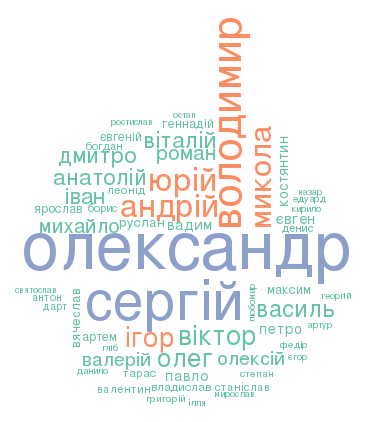This article is based on information about majoritarian candidates, published on website of the CEC. As long as average citizens cannot analyze all the data, we created a joint information portrait of parliamentary candidates.
As of 5 October 2014, information about 3,507 was available on website of the CEC, including 2,103 self-nominated candidates and 1,404 candidates nominated by parties. We also included candidates who have managed to cancel their registration (13). The reason is, we are interested in the fullest possible information, similarly to our previous researches. The programming language R was used for analytical processing. The QGIS geoinformation system was used to create cartograms.
Total number of candidates nominated in Ukrainian oblasts in on Diagram 1.
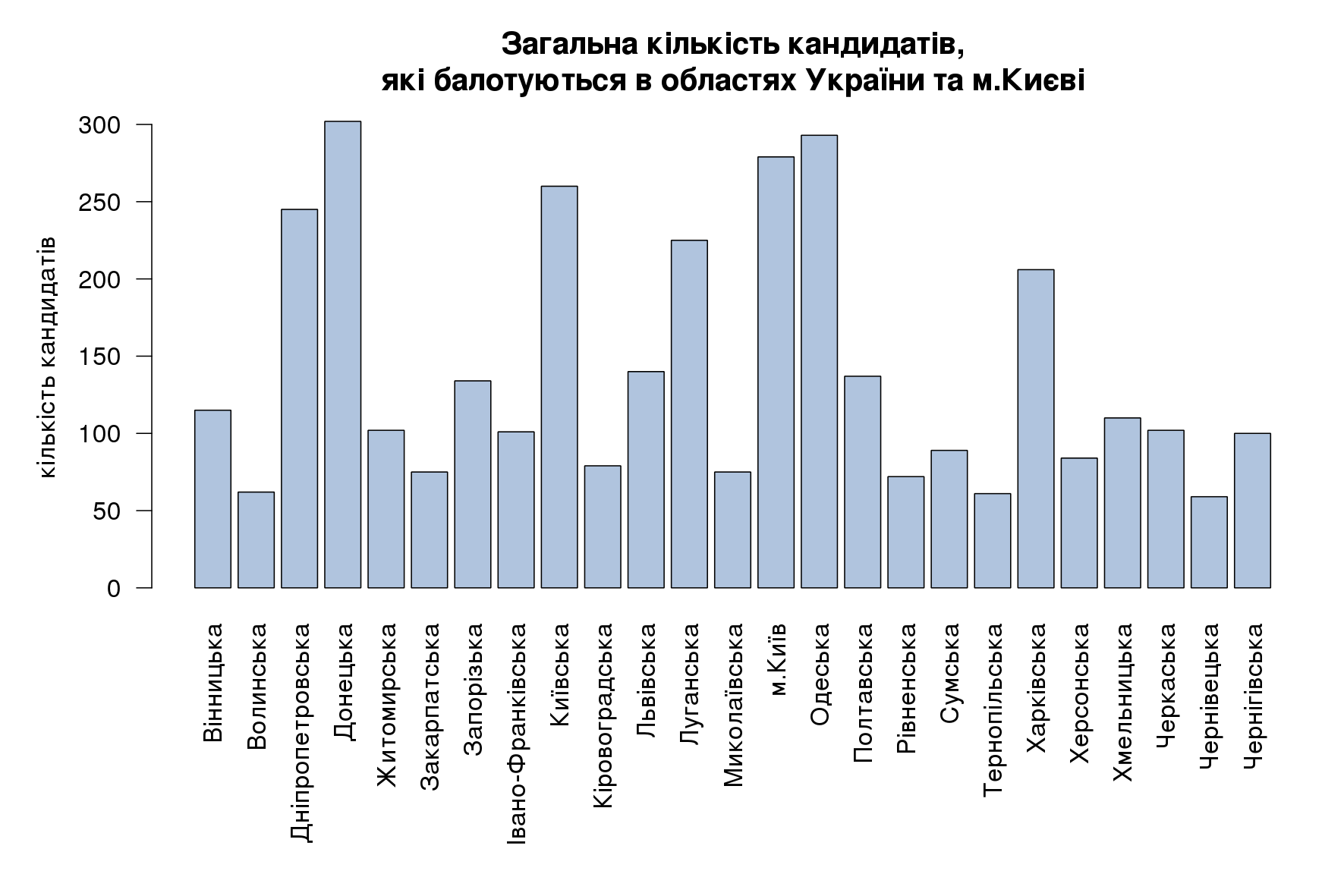
Diagram 1 — Total number of candidates in Ukrainian oblasts and city of Kyiv
Three top oblasts are Donetsk (302), Odesa (293) and Kyiv city (279). The last three are Chernivtsi (59), Ternopil (61), and Volyn (62) oblasts.
Thus, let's see where candidates live. They all provide information about the place of their registration. But where do they live?
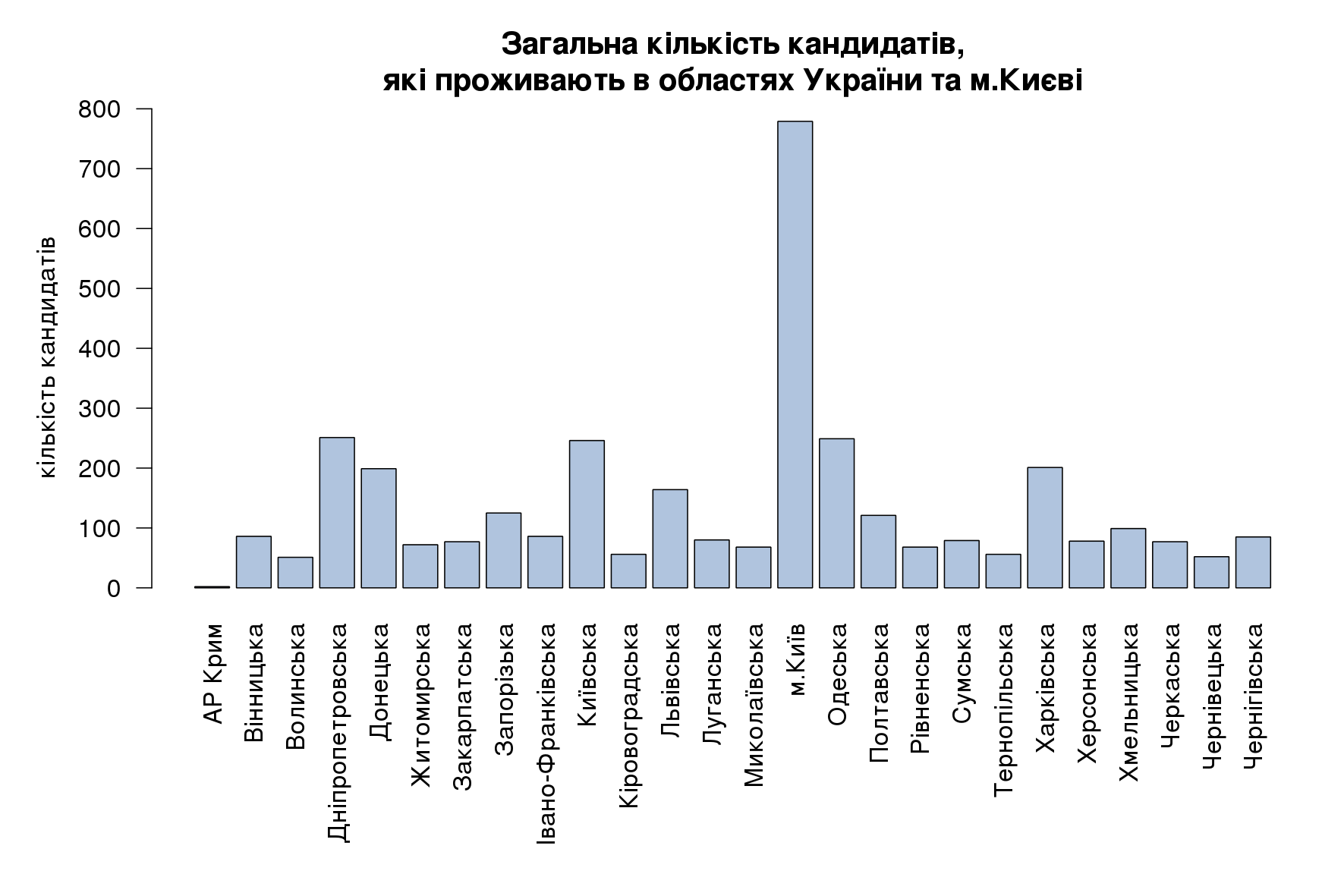
Diagram 2 — Total number of candidates living in Ukrainian oblasts and city of Kyiv
As we can see, Kyiv city is leading (779). The second line of leaders - Dnipropetrovsk oblast (251), Odesa oblast (249), Kyiv oblast (246), and Kharkiv oblast (201). The last three are Volyn oblast (51), Chernivtsi oblast (52), and Ternopil oblast (56). Only two MP candidates are registered in the Autonomous Republic of Crimea.
After we study two previous diagrams, a question arises: "Which oblast have the largest number of "non-local" candidates?" We can find out the answer. The result is on the Diagram 3.
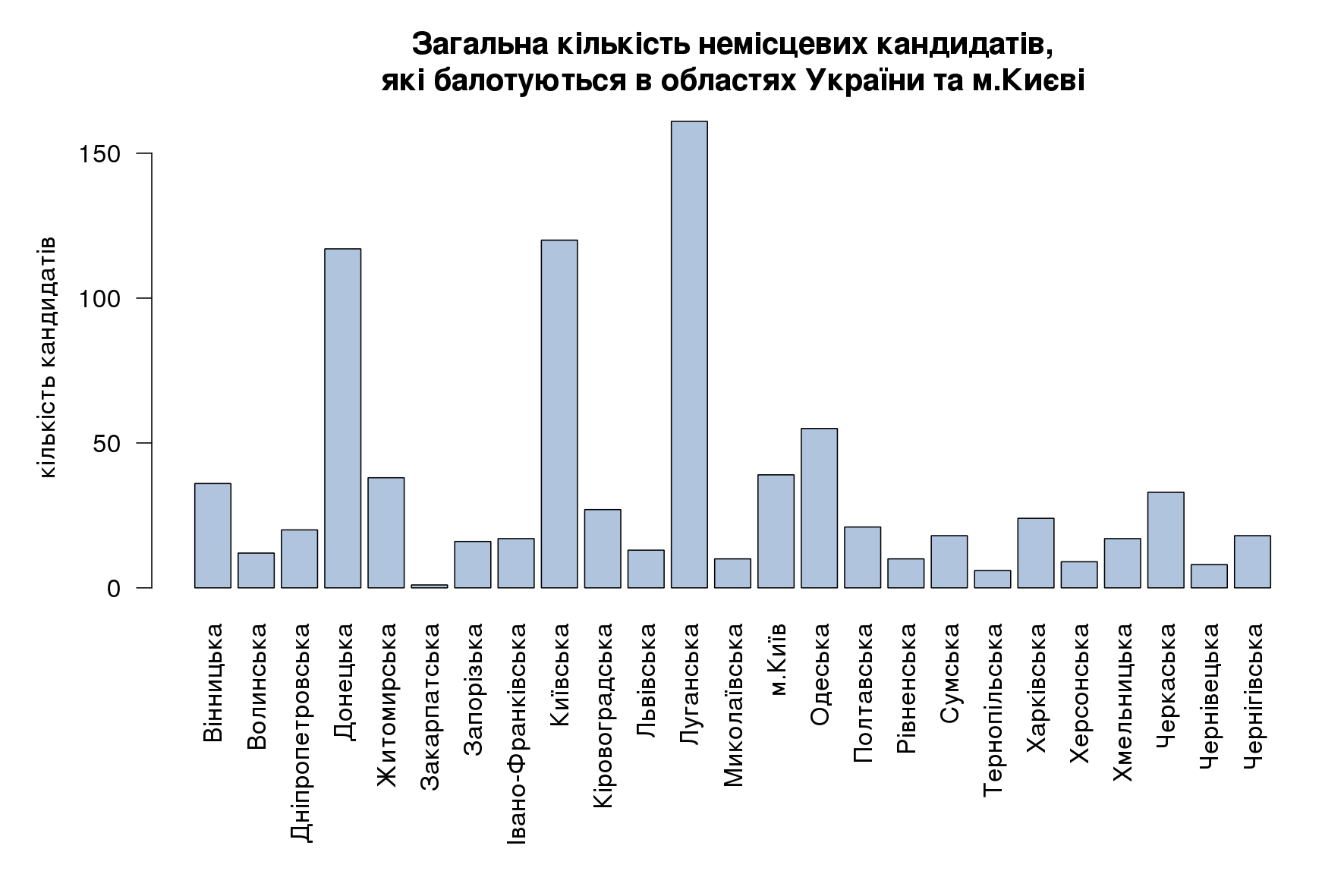
Diagram 3 — Total number of non-local candidates in Ukrainian oblasts and city of Kyiv
Luhansk, Kyiv, and Donetsk oblasts have the largest number of candidates registered in another oblast: 161, 120, and 117 respectively. The last three are Zakarpattia oblast (1), Ternopil oblast (6), and Chernivtsi oblast (8).
However, we took into consideration the fact that a person could be born and living in one oblast, then changed the place of registration, and now want to participate in the race in their small fatherland. To make sure that such candidates are not included in our calculations, we counted only "true non-local candidates" - those who have different place of birth and place on nomination at the same time. The results are given below.
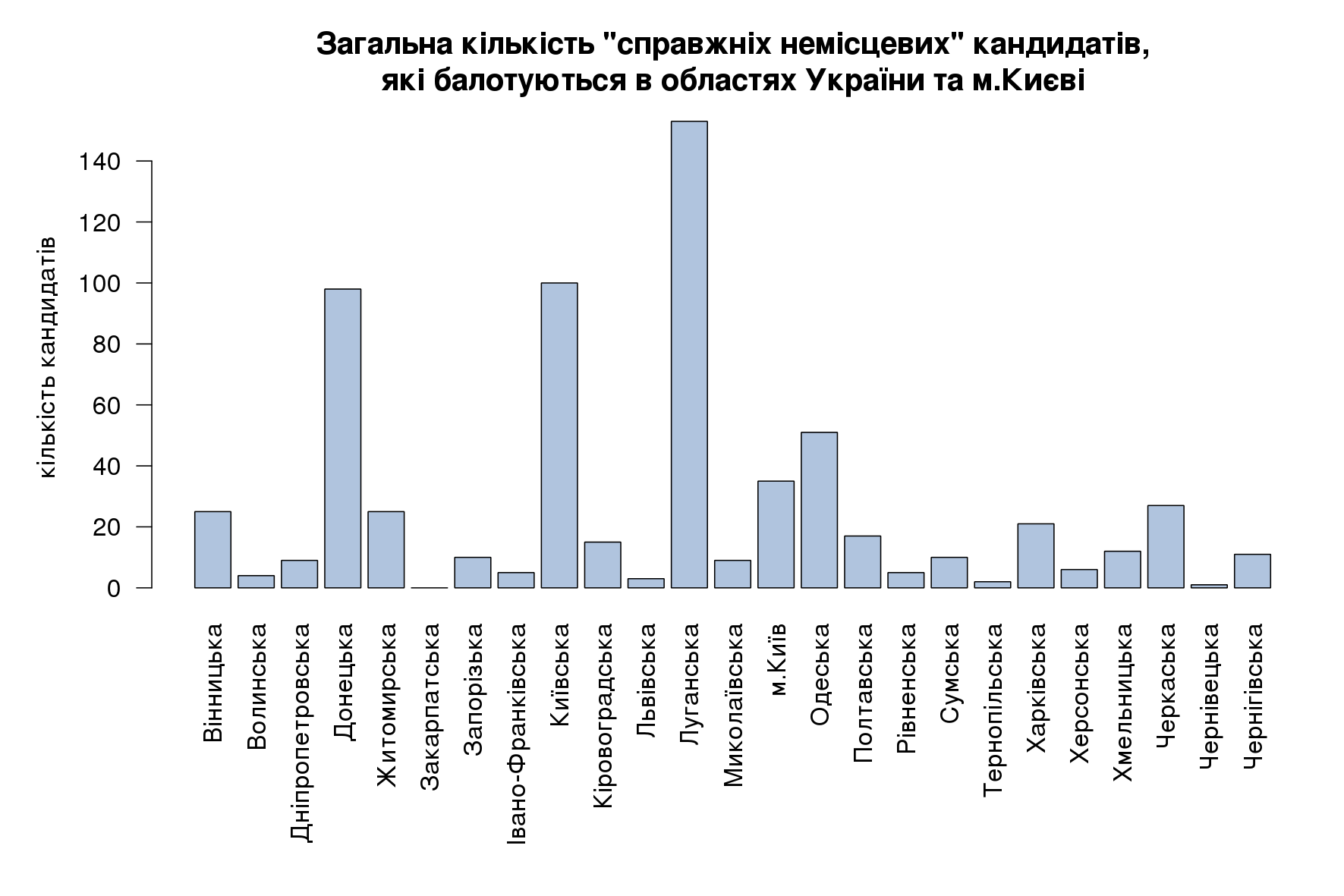
Diagram 4 — Total number of "true non-local candidates" in Ukrainian oblasts and city of Kyiv
Total number of "true non-local candidates" turned out to be especially interesting. For a deeper analysis, we created a cartogram depicting the relative number of these candidates in oblasts and in Kyiv (in percentage).
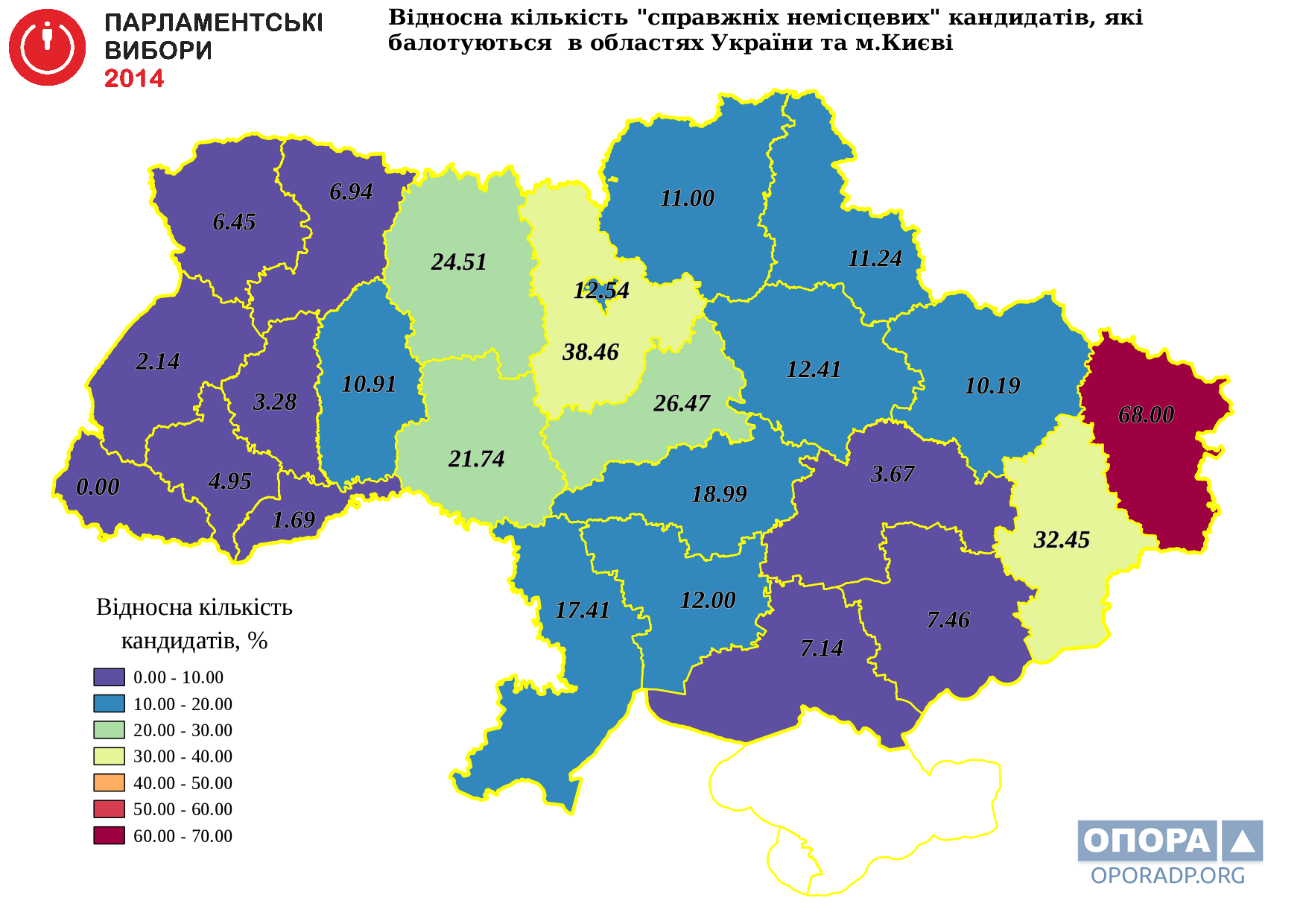
Diagram 5 — Cartogram depicting the relative number of "true non-local candidates" in Ukrainian oblasts and city of Kyiv
We can see an interesting regularity on the cartogram - the number of "true non-local candidates" who are absolute strangers in oblasts increases in direction of central oblasts of Ukraine. Luhansk and Donetsk oblasts are also very different from the others, as long as former local elites are being forced out as a result of the anti-terroristic operation.
Information about the place of birth of candidates is even more interesting. On our scale, we separated Ukrainian oblasts, the Autonomous Republic of Crimea, cities of Kyiv and Sevastopol, and other countries of the world without division on administrative-territorial units.
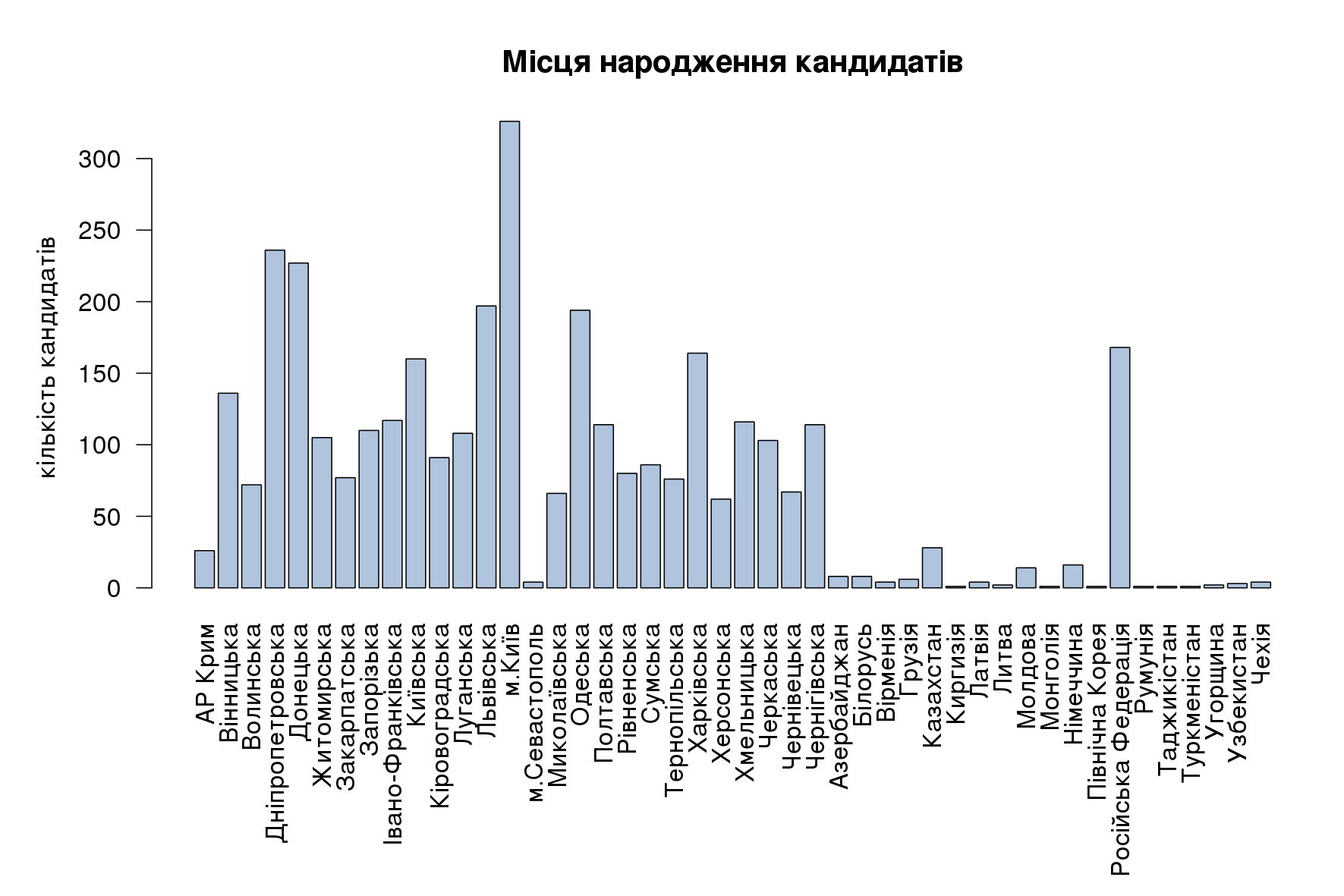
Diagram 5 — Birth place of candidates
Most of candidates were born in city of Kyiv (326), Dnipropetrovsk oblast (236), and Donetsk oblast (227). It's interesting that the number of candidates born in the Russian Federation (168) in much higher than the number of candidates born in most of Ukrainian oblasts. The last three locations are city of Sevastopol (4 candidates), the Autonomous Republic of Crimea (26) and Kherson oblast (62).
The gender balance is so unequal that we didn't even make a chart to show: 3007 men and only 500 women of 3507 candidates.
The age of candidates, presented on Diagram 7, is more interesting.
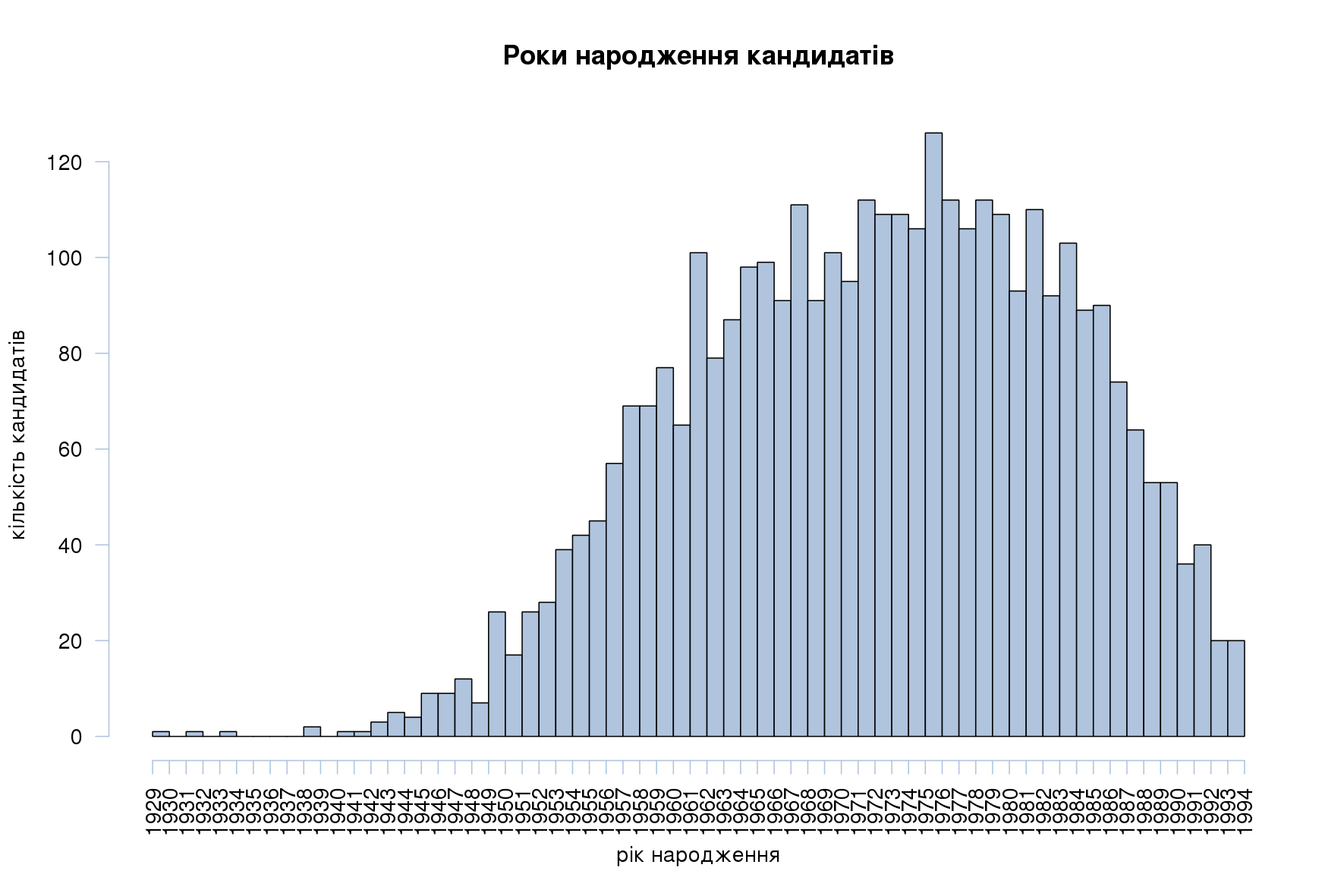
Diagram 7 — Age of candidates
According to the promulgated data, self-nominated candidate Ivan Vasyliovych Diak (SMD #179, Kharkiv oblast) is the eldest candidate, born on 22 July 1929. Mykola Oleksandrovych Kudrevych, nominated by the Radical Party of Oleh Liashko, is the youngest. He is also nominated in SMD #179, was born on 9 October 1993.
Almost all the candidates have graduated from a university (3148). 205 candidates have gained secondary and 129 - special secondary education.
Finally, we decided to show the most popular surnames and names of candidates. To build word cloud with surnames, we selected surnames that repeat 3 and more times (see attachment in the end of the article). Unfortunately, the most common surname (15 individuals) is the surname of the famous hero of George Lukas works. It characterizes these candidates quite well! We'll see if the dark side of Jedi power will help them in the election... The next popular surnames are: Melnyk-Savchenko-Shevchenko (11) and Kravchenko-Pylypenko-Tkachenko (9).
We used a filter "3 and more times" to build clouds of names, but divided them into men and women names. The most common women names are: Iryna (44), Nataliia (40) and Tetiana (37). The name Aleksandr is an absolute leader among men names (337). The next are: Serhii (274) and Volodymyr (192). And, of course, there are 15 Darths, who turned to the dark side of power to win the election campaign.
Thus, the portrait of an average MP candidate in 2014 Parliamentary elections looks like this: it's a men; 40-45 years old; bearing name Oleksandr, Serhii, or Volodymyr; gained higher education; born and living in Kyiv; nominated in Donetsk oblast, Odesa oblast, or in Kyiv city.
Attachment 1 — Cloud with surnames of candidates
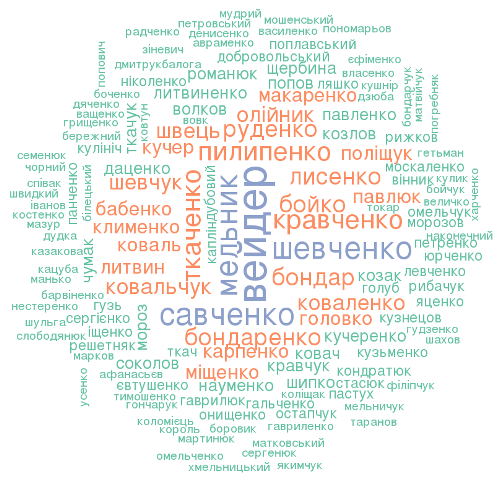
Attachment 2 — Cloud with names of women candidates
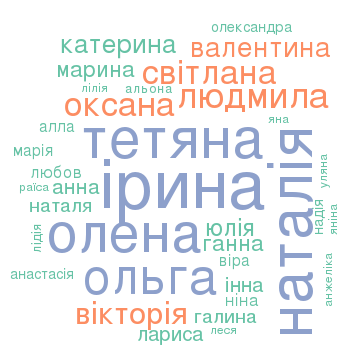
Attachment 3 — Cloud with names of men candidates
